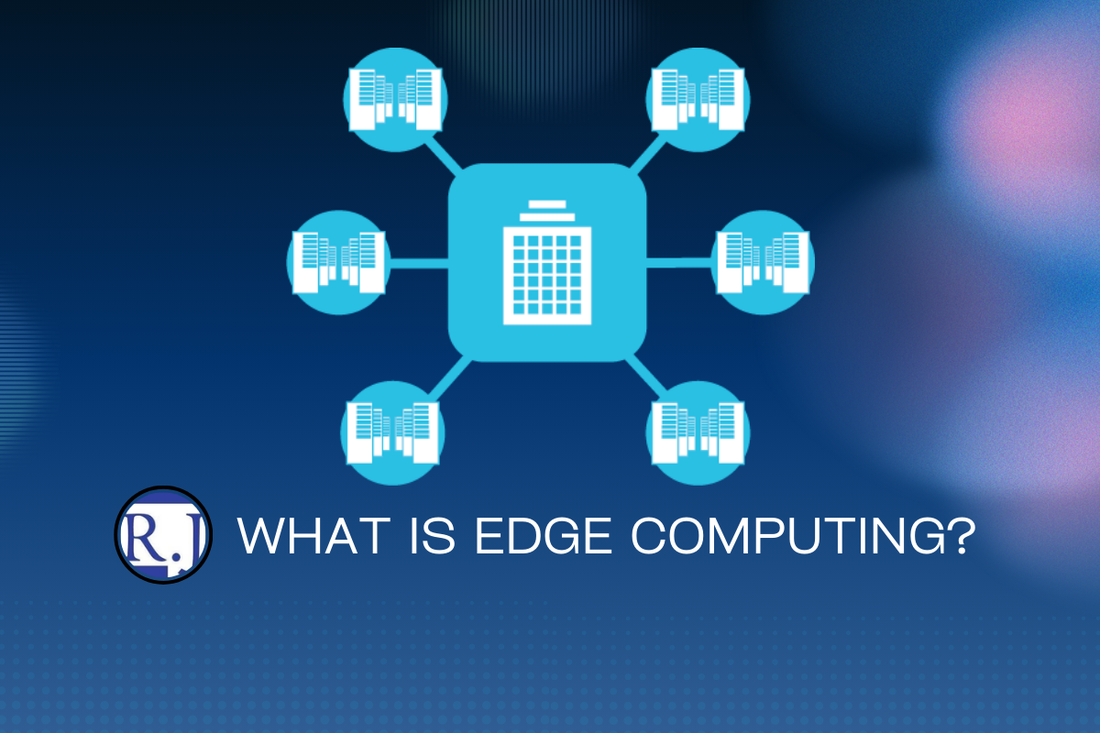
What is Edge Computing?
Share
What is edge computing and why do we need it?
In networking, edge computing is a distributed computing model that allows data to process closer to devices (sources). As opposed to transmitting data from a device to a centralized data center for processing and information storage, the data is instead transmitted and processed at a local server or even the devices themselves (or just as the name suggests, at the “edge” of the network).
Now, where does edge computing come in for modern networking? Well… the current scale and volume of data processing demands are mismatched, whereas the latter has largely outpaced the capabilities of the former. Just the sheer amount of data produced by devices would greatly overwhelm most enterprise’s networks. Which, consequently, can result in increased latency, reduced productivity, and insufficient processing capabilities for critical data.
Simply put, edge computing is a much needed solution for our data processing demands.
How does edge computing work?
As mentioned, edge computing processes data at the “edge” of a network, instead of relying on a centralized cloud or remote data center. The first step in this process is the data generation by the edge devices (think cameras, smart meters, IoT sensors, industrial machines, etc.). These devices generate a large volume of data, usually due to the real-time data collection needs, that are sent to an edge node (e.g. micro data centers, gateways, edge servers) for processing. At these nodes, the data is analyzed and filtered. From this process, only the most relevant and critical data is sent to a centralized data center for processing – greatly reducing network congestion – while the rest is processed and stored locally.
What are the major benefits of edge computing?
Naturally, there are many upsides to using edge computing, among some are:
Lower network latency and increased speed
One of the immediate benefits of edge computing is the near instant processing of data. Because the data processing starts at the edge, there is an increased speed and a reduced latency for the transmission and requests made by the devices.
One way to see this would be thinking of edge computing as a vending machine. You’re feeling a little famished at work and would like a quick snack to alleviate your pangs. You could make a run to the local supermarket, find something you like, wait in line, check out, and get back to what you were previously doing. Or you could simply visit the vending machine out in the hall and instantly have your selected snack dispensed. With the latter, you save a lot more time by simplifying the process and reducing the travel time needed. In edge computing, it’s just the same.
Reduced bandwidth usage and congestion
Data is everywhere nowadays! Although our networks are continuously improving their capabilities to handle the influx of data, the utter magnitude of data generation will either completely overwhelm our networks or severely hamper their ability to process them optimally. Imagine thousands upon thousands of IoT sensors and edge devices transmitting data and requests to a singular data center for processing. Yes, said data center is operating. But is it operating as efficiently and optimally as it can?
Edge computing mitigates this problem by having this entire process done locally. Only the most critical and relevant data is sent to the centralized data centers, which can greatly reduce network delays and performance issues.
Enhanced security & privacy
Data privacy is a major and valid concern that many data center operators and organizations face. This is especially true for cases where data is moved across national borders. Data privacy regulation can differ from region to region, but edge computing solves this problem by ensuring the data collection, storage, and processing is all completed locally.
Protecting sensitive data from malicious actors and complications isn’t the only concern however. With how interconnected our world has become, there’s an increased risk and vulnerability for networks that are managing thousands of IoT devices and sensors. Each one of these devices can pose a risk for cyber attacks. Luckily, edge computing helps mitigate this by allowing local processing.
Reliable computing in remote locations
Another benefit of edge computing is the ability to function in remote locations where connectivity can be a problem. Edge computing enables operations even with intermittent or poor network connectivity, which is especially important for industrial locations that operate in harsh and remote environments.
Cost effectiveness
The sum of all these benefits also turns edge computing into a cost effective solution. Operators and organizations can save bandwidth and cloud storage by being closer to the sources, which also reduces downtime. Businesses are also able to scale quickly by deploying smaller, distributed edge devices rather than expensive, centralized data centers that may be out of their budget range.
What are the downsides of edge computing?
Limited processing power compared to cloud
In general edge devices have less computing power than when compared to massive cloud data centers. Their function and design is to provide local data processing, but with applications that may demand more computing power (such as AI models), cloud is more suitable for these tasks. Data storage is also limited in edge devices, where long term collection may need to be offloaded to external storages or the cloud.
Maintenance and management complexity
Unlike centralized cloud servers, edge computing relies on multiple distributed devices or servers. This increases the complexity of maintenance and management due to the increased amount of hardware. In some cases, edge devices may not be able to reliably connect to the internet. This makes updating software and repairs harder in these remote locations. These repairs and maintenance also require a higher level of technical expertise from the IT teams on-site. Think of a logistics company using edge computing in a warehouse that must regularly update firmware on thousands of sensors. This is a maintenance burden that will take time to fulfill.
Limitations and challenges of scalability
Deploying more edge devices also requires more infrastructure investments. Unlike cloud computing, where you can scale on-demand, edge deployments will require adding more physical devices and managing them. This is usually more of an issue when different vendors are using various edge computing frameworks. Standardization issues arise due to the complex interoperability of this situation.
What are some applications of edge computing?
Generally, applications that require real-time data processing benefit the most from edge computing. Some of these applications include:
- Autonomous vehicles – self-driving cars need the ability to process all the data from their sensors, cameras, and LiDar instantaneously. This is especially important to ensure safety of both the passenger and other drivers on the road. Sending this data through traditional means would cause delays, so edge computing is utilized in this application instead.
- Traffic management – just like in autonomous vehicles, real-time collection and analysis will help optimize traffic and reduce congestion to prevent accidents.
- Healthcare – real-time monitoring of a patient greatly increases response time from medical professionals in emergencies. Instead of sending data to a central location, professionals can monitor the patient locally while also protecting their privacy.
- Industrial IoT – Iot sensors and devices on manufacturing equipment analyze machine performance in real time to detect malfunctions and optimize production, this way businesses can prevent costly downtime by identifying failures before they happen and take preventative measures.
- Retail stores – self-serve checkout systems (powered by AI) and customer tracking cameras process data locally to enable an experience of cashier-less payments and a personalized shopping. Removing the latency from transmitting data to the cloud can speed up checkouts and also improve security! Take the Amazon Go stores as an example. At these locations, edge is used to track items picked by customers and automatically charge their accounts when they leave. This can result in an improved customer experience and speed.
-
Content streaming and delivery – services such as Netflix and Youtube use edge caching to store popular movies and videos in local servers to ensure faster playback.
What is the difference between cloud and edge computing?
The easiest way to think of the differences between cloud and edge computing is to consider the latter as an intermediary computing technology.
Cloud computing providers such as Amazon Web Services (AWS), Google Cloud, and Microsoft Azure allow companies to utilize on-demand computing services over the internet (over the cloud). Without the need for their own physical infrastructures (data centers), businesses can save money from constructing these buildings and their associated costs.
Edge computing, on the other hand, allows companies to collect and process data in more remote locations (the edge). While the majority of the data is processed in real-time, only the most important data is sent to a central data center for faster processing.
Physical components in edge computing?
Edge computing is composed of a combination of hardware, software, and networking components to enable real-time data processing at the edge of a network.
Some of the physical components will include:
- Edge devices – endpoints that generate, collect, and in some cases process data before sending it to the edge servers (IoT sensors, surveillance cameras, self-driving cars, point-of-sale devices)
- Nodes – miniature computing units that help process and filter data locally before sending it to the cloud
- Gateways – intermediaries between edge devices and the cloud that aggregate, filter, and secure data before they are transmitted
- Processors – handles real-time data processing (e.g. Apple Neural Engine, Intel Xeon D, NVIDIA A100, Qualcomm Snapdragon, Google Coral Edge TPU, etc.)
- Switches – connect edge devices, gateways, and servers all while ensuring high speed data transmission with minimal latency
- Patch panels – used to organize and optimize cable connections to maximize space efficiency in server racks
- Routers – directs traffic between edge devices and the wider network








